I read the article in the Courier Mail on 19 March 2011, about the dispute erupting over the late Ken Talbot’s estate, with great interest. Mr Talbot died in June 2010, has an estate estimated to be greater than $1 billion.
Mr Talbot was survived by 4 children – 2 from his first marriage, and 2 younger children from his second marriage. The 2 older children were left 24% each and the 2 younger children 17% each. The grandfather of the 2 younger children has now lodged a claim against the Estate of Mr Talbot seeking further provision for the 2 younger children, amongst other things.
This will prove to be a very interesting case if it goes all the way to a hearing, especially given the amounts at stake.
There has recently been some inconsistency in decisions made by the Supreme Court in Queensland about whether adequate provision has in fact been made for beneficiaries. This highlights the need to give very careful consideration as to how your estate is to be distributed upon your death, and to anticipate whether there is any risk of a potential claim being made.
Some of the matters that should be taken into account when considering your will include:
- Who in fact can make a claim against your Estate – currently this group includes the deceased spouse (including de facto), children (including step children) and financial dependants;
- Whether some of these people have been left out of the Will, or received a lower proportion than others. It is very important that detailed reasons are provided so that a Court can give consideration to the Will maker’s intentions when they made the Will. A statutory declaration outlining this information can be a useful tool;
- Exactly what assets form part of the Estate. In Queensland, only assets owned in the deceased’s name will form part of the estate, and therefore only these assets will be in dispute. Assets owned in trusts and companies are not estate assets. The situation is different in other states where these assets can form part of the estate, referred to as a “notional estate”;
- Whether some strategies can be implemented now to reduce the risk of a claim being made, such as:
-
- Transferring assets to beneficiaries pre-death (note however there may be tax and stamp duty considerations here);
- Making a binding death nomination in Superannuation policies and life insurance policies;
- Taking out an insurance policy to provide further funding so that all beneficiaries can benefit;
- Giving detailed reasons as to why some beneficiaries have missed out;
- Structuring assets so that they are owned in entities that do not form part of the estate (such as companies and trusts. Be aware however that often shares in companies are owned in the persons name and these will form part of the estate;
- Entering into binding agreements now for the transfer of business assets and other assets, upon death.
These are just some of the issues that need to be addressed when considering your estate plan. It is important to make sure your interests, and that of your beneficiaries are protected. It will be interesting to see the outcome of the Talbot matter, and how the Courts interpret the Will and the claims that have been made. If you have questions regarding contesting or challenging a Will, please don’t hesitate to contact me.
The information provided in this article is for general information and educative purposes in summary form on legal topics which is current at the time it is published. The content does not constitute legal advice or recommendations and should not be relied upon as such. Whilst every care has been taken in the preparation of this article, Wills, Estates and Probate Lawyers (WEP Lawyers) cannot accept responsibility for any errors, including those caused by negligence, in the material. We make no representations, statements or warranties about the accuracy or completeness of the information and you should not rely on it. You are advised to make your own independent inquiries regarding the accuracy of any information provided on this website. WEP Lawyers does not guarantee, and accepts no legal responsibility whatsoever arising from or in connection to the accuracy, reliability, currency, correctness or completeness of any material contained in this article. Links to third party websites or articles does not constitute any endorsement or approval of those sites or the owners of those sites. Nothing in this article should be construed as granting any licence or right for you to use that content. You should consult the third party’s terms and conditions of use in relation to any third-party content. WEP Lawyers disclaims all responsibility and all liability (including liability for negligence) for all expenses, losses, damages and costs you might incur as a result of the information being inaccurate or incomplete in any way. Appropriate legal advice should always be obtained in actual situations.


